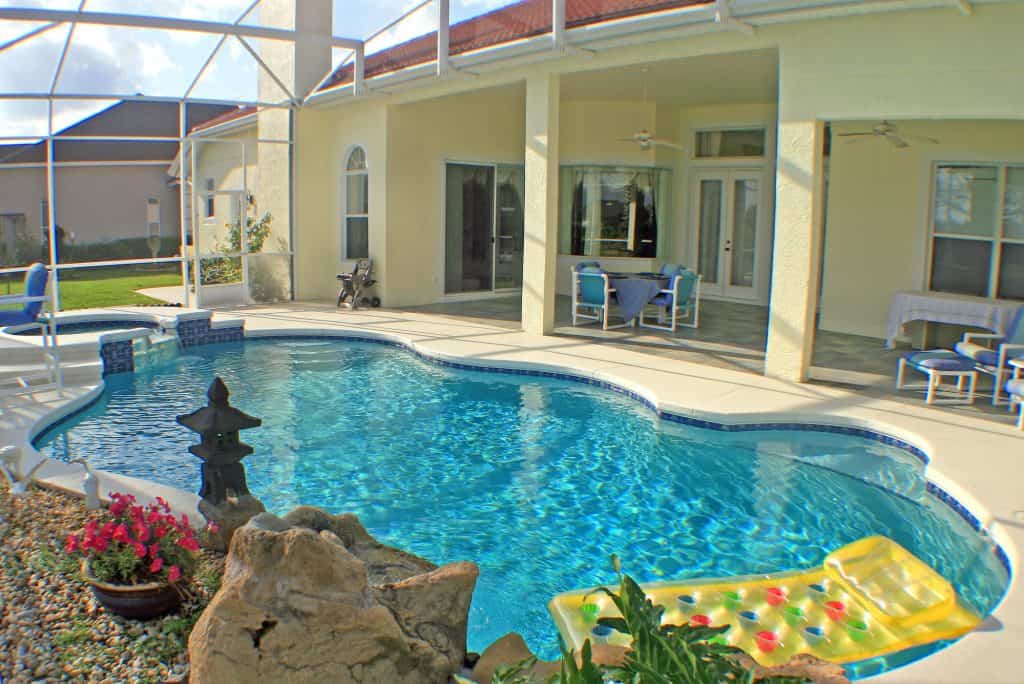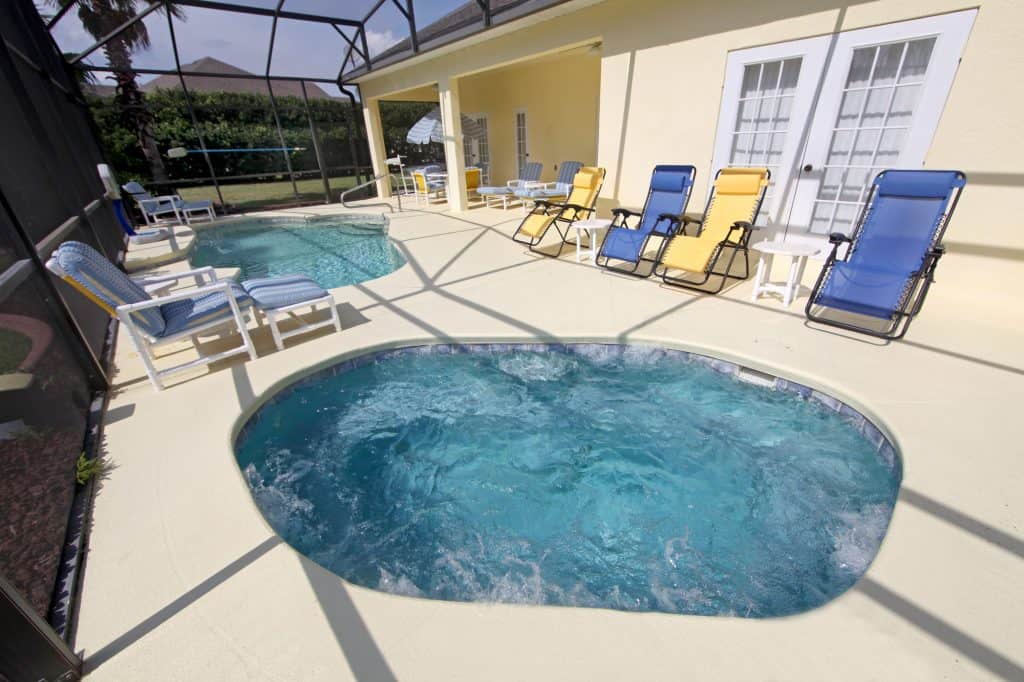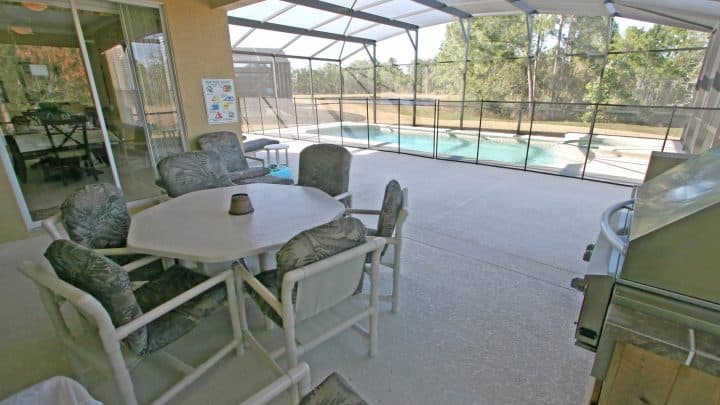Whether you’re building a new home or simply an architecture enthusiast, you might’ve come across the term “lanai.” This outdoor feature is often comparable to patios, porches, and verandas, yet it’s still unique enough to be indescribable by any word in the English dictionary. So, what is a lanai?
A lanai is a roofed outdoor space attached to a house that originates from Hawaii and is typically found in tropical areas. The term “lanai” in Hawaiian is often translated to balcony or patio, but the structure is distinctive from either of these two. A lanai is usually made of pavers, concrete, or stone.
Lanais are common in Hawaiian architecture and have both commercial and residential applications. In simple terms, lanai refers to a rear porch covered by a house’s existing roofline, which extends over the stone or concrete foundation. It can be a screened porch or be surrounded by glass paneling.
As lanais gain more popularity throughout the rest of the US (especially in Florida), it’s time to learn a bit more about the structure’s purpose, unique qualities, construction, look, and background.
The Purpose of a Lanai
If you’re considering adding a lanai to your home, you might be wondering what its purpose is.
Well, you’ll be happy to hear that a lanai adds much more than just aesthetic appeal to a property. There’s a reason these outdoor spaces are popular in hotter climates like Florida and Hawaii, where they’re practically a must if you want to survive the scorching summer sun.
Lanais (and similar outdoor structures) are an excellent addition if you want to have a tropical outdoor living area while still staying protected from the sun (and the many, many insects).
They’re a space where you can partake in dining or find peace and quiet while feeling more in tune with nature. Additionally, all of this comes from the comfort of your own home (and sometimes apartment buildings).
These outdoor spaces make for an excellent location to hold small family gatherings, lunches, and dinners, assuming they have enough space. There’s nothing like enjoying a fresh, summer meal while feeling the light, warm breeze and hearing the birds chirping in the background.

If a lanai is big enough, you could even put a pool inside. Think about it: It’s the ideal place to lounge around and go for a swim during hot summer days. You’ll enjoy the sun and the pleasant summer air, but you’ll still be protected through the partial covering.
If you want some extra privacy, you can always add screen enclosures to one or more sides to keep curious eyes, annoying insects, and excess heat out of your lanai.
Home gardeners can appreciate having a lanai at their disposal as well. The semi-covered structure allows them to keep their plants in partial shade during summer and protected from the elements throughout winter.
For these reasons, a lanai also adds value to a property, especially in states like Florida or Hawaii where they’re such a fundamental part of the local architecture.
Lanai vs. Patio — Differences
You’ll often find a lanai compared to a patio. After all, they’re both paved outdoor areas on the ground floor of a building, where you can lounge around and enjoy those pleasant summer days. However, the two still differ in terms of structure and function.
The main difference between patios and lanais is that the former typically doesn’t feature partial covering, while the latter does. Even though both their foundations are typically paved with concrete and sometimes have ceiling fans, that’s as far as their structural resemblance goes.
The partial covering over a lanai is usually an extension of the roof of the main house. As a result, lanais (unlike patios) are incorporated into the floor plan. In some cases, a lanai can even be fully covered with screens or glass panels. On the other hand, patios are usually more exposed to the outdoors, unless they are also outfitted with screens.
As a result, many lanais can be decorated like an indoor space, as there’ll be less chance of the furniture getting affected by the elements. In contrast, patios are much more exposed, meaning they should be furnished with outdoorsy pieces and materials. It’s safe to say that these structures are nothing alike design-wise.
Moreover, while lanais can be big enough to fit a pool inside, patios are generally much smaller.

Lanai Construction
Don’t let its unfamiliar name fool you. Lanais are as straightforward to plan and build as any patio, balcony, porch, or veranda. As long as you have the space for a comfortable outdoor area, I highly recommend you look into building a lanai.
Here are a few tips on lanai construction that might help you throughout the process:
- If the covering isn’t going to be an extension of your existing roof, make sure to choose an option that complements your roof. Otherwise, instead of adding to your house’s aesthetics, the lanai will stick out like a sore thumb instead.
- Stay away from hand-stretched screenings. If possible, opt for glass paneling with UV protection.
- Plan the lanai design according to its level of coverage. If your lanai is covered on all sides, you can be more experimental with the furniture. If not, you’ll have to go for outdoorsy styles and materials.
- Consider finishing its cement floor with textured paint. While the grey of concrete floors is boring, you also don’t want a slick finish on the solid floor (especially if you’ll be moving around the lanai with water on your feet).
If you’re looking to learn more about what to keep in mind while constructing a lanai, I highly recommend reading through this article.
How Are Lanais Built?
Lanais are usually built under a home’s existing roof extension by building a foundation of stone or concrete slab right under it. Afterward, screenings or glass panels are added one by one at the perimeter of the paved outdoor area. This creates a more defined shape and better protects the space from the elements.
Note that lanais differ widely depending on their layout and design. However, what I outlined above is how they’re generally constructed.
If you’re interested in knowing more about how these outdoor spaces are built, check out the following video from Bob Vila.
What Does a Lanai Look Like?
A lanai looks like a mix between a patio and an enclosed porch. Lanais feature a stone or concrete base and are typically covered by a roof. In many cases, they also feature side coverings such as screenings and glass panels. They look similar to sunrooms, albeit a bit more outdoorsy.
As I said before, this essential piece of Hawaiian architecture is so unique that there’s no single word that can accurately capture it in the English language. The best way I can put it is that lanais are more covered than patios, not as covered as sunrooms, and much bigger than porches.
Lanais provide that perfect balance between an indoor and outdoor experience, as they’re detached enough from the main home to be considered an exterior space. At the same time, they’re still shielded enough to provide privacy and protection from the elements.
Here are some of the main design features of a lanai:
- The roof extends from the main home and shelters the outdoor area.
- The foundation is made of concrete or stone.
- There are screenings or glass panels on one or more sides.
- At least one side is open to the elements (or can be opened if need be).
Which Areas Have Houses With a Lanai?
The most common areas that have houses with lanai are Hawaii and Florida. The concept and word itself originate from Hawaii, where lanais are a popular component of local architecture. Subsequently, Florida adapted the design, as lanais are highly practical for the state’s hot and humid climate.
As you can see, there’s a pattern with the areas where lanais are most popular.
These structures are excellent to add living space to homes in tropical and sub-tropical climates, as they allow you to enjoy the sunny outdoors without suffering the excess heat or humidity (or the legions of insects and bugs).

Florida
Lanais have become a staple in Floridian architecture, and they can significantly bump up the value of a property in the area. Homeowners in the Sunshine State like to furnish their lanais as they would any other room of the house. They also like to add screenings or glass panels to keep the furniture protected.
Hawaii
Lanais are a traditional Hawaiian structure dating back to the 19th century, and as such, they’re widely popular in the area. Due to the state’s unpredictable weather, locals designed an outdoor space that allowed them to take in the fresh air while being protected from the extreme temperatures and strong winds.
Conclusion
Lanais are outdoor structures connected to a house that originate from Hawaii. These spaces are usually covered by an extension of the main home’s roof and are protected by screenings or glass panels on one or more sides. However, at least one of the walls should be open (or have the ability to be opened) for a structure to classify as a lanai.

